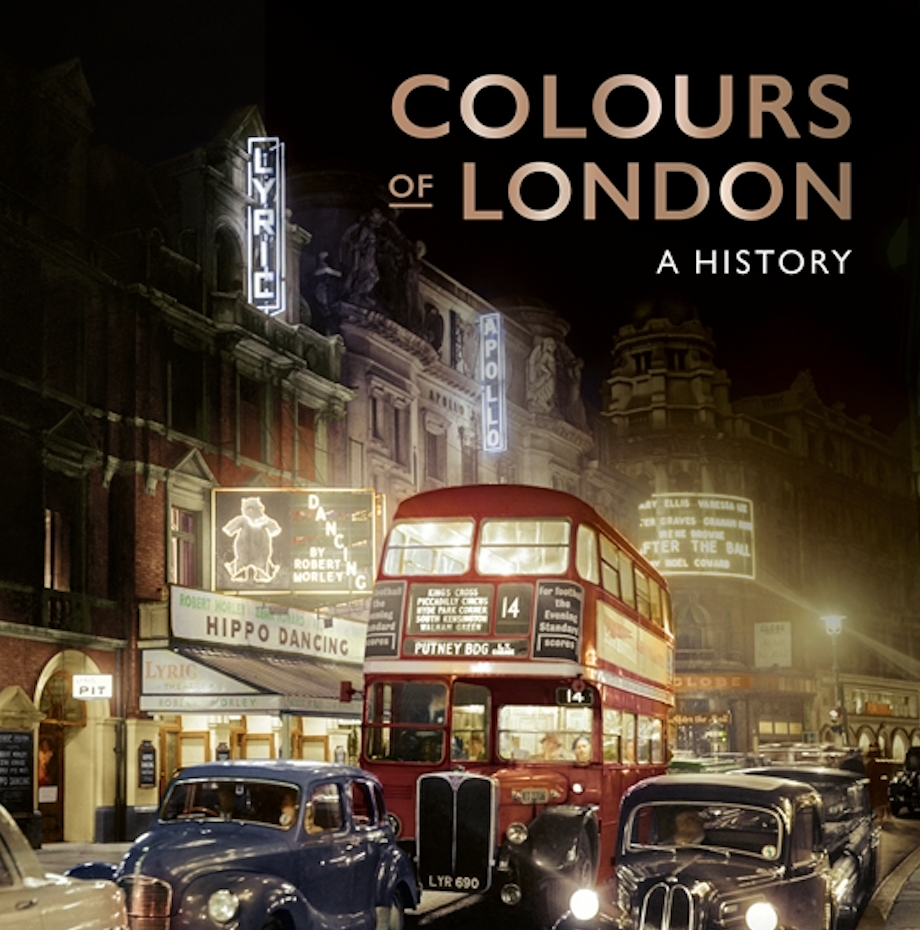Post
BOOK REVIEW | Colours of London
21 Jun 2023
By Peter Ackroyd
Reviewed by Liz Gwinnell
When you think of the colours of cities, perhaps it might be the caramel spires of Oxford or the orange and reds of Venice that spring to mind. London is not an immediately obvious candidate.
Yet in his new book, Colours of London, Peter Ackroyd paints a colourful history of our capital city: a feast of paintings and photographs served up with a cornucopia of words and facts. History is injected with colour and comes alive with vibrancy and resonance as he takes us into the city and points out things we may not have noticed before. From the refreshing green of London’s parks to the cherry red of London’s buses, the book links London’s colourful past to its present and finds colour around every corner.
From the vivid descriptions of the Festival of Britain in 1951 which brought much needed colour to the South Bank after the cheerless years of austerity in post-war Britain, to the green, white and purple of the Suffragettes, Peter Ackroyd presents history through the spectrum, shining a light on the stories of our great capital city by showing how colours are often entrenched in, associated with and closely aligned to history as well as making an important contribution to modern day London.
Interested in joining The London Society? Click here
Peter Ackroyd’s ability to dig out little known facts about London and the River Thames in his previous books and convey them lightly to the reader, has been described as “genius” by reviewers of his writing. Colours of London is no different, with each chapter dedicated to a vibrant colour of the spectrum. Who knew that in the late nineteen century, yellow was the colour of decadence, that the dominant colour of Tower Bridge is blue or that Covent Garden was once the kitchen garden of Westminster Abbey: “a sanctuary of colour and brightness in what had become Central London”?
The kaleidoscope continues in a chapter dedicated to red when, during the London Blitz, barges on the Thames were set ablaze turning the river red but afterwards, in a grey and exhausted London, an explosion of wild flowers turned bomb sites into bright carpets of colour. Brown is found in the East End slums, black in the stories of the ravens of the Tower of London and the protracted mourning of Queen Victoria. It is also the colour of the Northern Line which took passengers further underground than ever before.
An entire chapter is dedicated to “The Night” which chronicles the illumination of after dark London from the early 1890s when electric signs were introduced to Piccadilly Circus as London moved from gas to electric lighting, bathing the streets and buildings in a colour and light all of its own.
Peter Ackroyd tackles the grand but also the humble: pavement artists and the different colours of the bricks used to create every structure from prisons to monuments; the colours and fashions of the 1950s and 1960s; the neon lights of 1960s Soho and Piccadilly Circus. The stories are all here.
In conclusion, he suggests that there is no one “London colour” but that it is all aspects of the city blending together which create its unique palette. This book would brighten up any coffee table with its vibrant front cover of London at night but it also deserves to be read from cover to cover, particularly, perhaps, on a cold winter’s day when the world may be much in need of an injection of colour.
